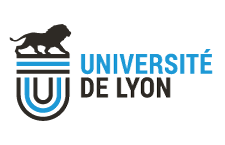ECOFECT > Presentation > Teams
NMR and Hepatitis C Virus
UMR CNRS 5086
- Address :
- Molecular and Structural Bases of Infectious
- Email :
- a.bockmann@ibcp.fr
- Trusteeship :
- CNRS, UCBL
Organization
Team leader : Anja Bockmann and François PeninAxe(s) of research
Our research is centered on the structural and functional analysis of the (membrane) proteins of the hepatitis C virus (HCV) on one hand, and the development of new tools in solid state NMR to determine the 3D structures of insoluble proteins such as fibrils and membrane proteins, on the other. To advance our understanding of the molecular mechanisms underlying cellular biological processes, our structural studies are done in close collaboration with virologists and biologists involved in the functional analyses of the studied proteins in the cellular context.
To further develop NMR approaches for conformational analyses and 3D structure determination, we study biological systems targeted to solid-state NMR studies by their water-insoluble nature. These include proteins involved in neurodegenerative diseases which form fibrillar structures such as prion proteins and α-synuclein. We also work on structural studies of membrane-bound proteins, by combined liquid/solid-state NMR approaches. As these proteins are often toxic for bacteria, we develop alternative production in cell-free systems using wheat-germ extracts. This is typically important in the context of our studies of the Hepatitis C virus (HCV). As no protective vaccine exists, and considering the limited efficiency of current anti-HCV therapies, there is an urgent need to develop more effective and better-tolerated therapies. In this context, our objective is to provide detailed structure analyses of HCV (membrane) proteins as a framework for molecular understanding of the mechanisms of HCV processing, replication, and assembly, as well as the interactions of HCV proteins with host cell components. For analyzing the structural features of the ten HCV proteins, we use NMR and various other biophysical methods, including molecular modeling, circular dichroism, electron microscopy, fluorescence spectroscopy and surface plasmon resonance. We mainly focus on the structure analyses and assembly of the HCV membrane-binding domains, with the main goal of identifying new viral targets for potential therapeutic intervention.
Key words: Solid-state NMR of proteins, Structural biology of the Hepatitis C Virus, NMR, HCV, Structure, Function
To further develop NMR approaches for conformational analyses and 3D structure determination, we study biological systems targeted to solid-state NMR studies by their water-insoluble nature. These include proteins involved in neurodegenerative diseases which form fibrillar structures such as prion proteins and α-synuclein. We also work on structural studies of membrane-bound proteins, by combined liquid/solid-state NMR approaches. As these proteins are often toxic for bacteria, we develop alternative production in cell-free systems using wheat-germ extracts. This is typically important in the context of our studies of the Hepatitis C virus (HCV). As no protective vaccine exists, and considering the limited efficiency of current anti-HCV therapies, there is an urgent need to develop more effective and better-tolerated therapies. In this context, our objective is to provide detailed structure analyses of HCV (membrane) proteins as a framework for molecular understanding of the mechanisms of HCV processing, replication, and assembly, as well as the interactions of HCV proteins with host cell components. For analyzing the structural features of the ten HCV proteins, we use NMR and various other biophysical methods, including molecular modeling, circular dichroism, electron microscopy, fluorescence spectroscopy and surface plasmon resonance. We mainly focus on the structure analyses and assembly of the HCV membrane-binding domains, with the main goal of identifying new viral targets for potential therapeutic intervention.
Key words: Solid-state NMR of proteins, Structural biology of the Hepatitis C Virus, NMR, HCV, Structure, Function
Domains
Solid-state NMR of proteins
Structural biology of the Hepatitis C Virus
Structural biology of the Hepatitis C Virus



 Welcome
Welcome Communication
Communication Contacts
Contacts Job offers
Job offers links
links WebAdmin
WebAdmin